Chm 1025 final exam review PDF

| Title | Chm 1025 final exam review |
|---|---|
| Author | Eric Aalo |
| Course | Introductory Chemistry |
| Institution | Florida Atlantic University |
| Pages | 43 |
| File Size | 164.8 KB |
| File Type | |
| Total Downloads | 27 |
| Total Views | 176 |
Summary
Download Chm 1025 final exam review PDF
Description
common names historical names, not based on systematic rules
diatomic elements H2 N2 F2 O2 I2 Cl2 Br2
S8, P4 polyatomic elements
parents what cations are named after
-ide ending for anions
ionic compound anion and cation
0 charge of ionic compounds
binary compound compound including two or more different elements
transition metals elements that form many cations
roman numerals used to denote charge on transition metals
molecular compound compound made of 2 nonmetal
prefix goes on the first element in a molecular compound
binary acid contains H and is in water (aq)
hydro-, -ic, acid modifications made to binary acids
polyatomic ion ion with 2 or more elements
acetate C2H3O2 (-)
ammonium NH4 (+)
hydrogen carbonate HCO3 (-)
hydrogen sulfate HSO4 (-)
bromate
BrO3 (-)
carbonate CO3 (-2)
chromate CrO4 (-2)
cyanide CN (-)
dichromate Cr2O7 (-2)
hydroxide OH (-1)
nitrate NO3 (-)
nitrite NO2 (-)
permanganate MnO4 (-1)
sulfate SO4 (-2)
sulfite SO3 (-2)
phosphate PO4 (-3)
oxyanion polyatomic ions containing oxygen
-ate, -ite suffixes for oxyanions
-ate suffix with more O than -ite
per+1 oxygen than -ate root
hypo-1 oxygen from -ite root
inorganic ion made with 3+ elements
acids often begin with H
oxyacids H first with an oxyanion
-ate to -ic, -ite to -ous, modifications for naming oxyacids
1 how many more oxygen atoms an -ic acid has than an -ous acid Accuracy Measurement of how close a result comes to the true value. Sometimes involves calibration with. A known standard
Precision Measure of the agreement between 2 or more measurements that are averaged to give reported value.
Dependent variable Quantity that changes in response to changes of independent variable
Independent Variable The quantity under control that determines the value of other variables. Changed to observe its effect on others.
Physical properites Determined w/out changing the chemical identity
List Physical properties States of matter. Color. Shape. Volume. Density
Chemical properties Determined by the chemical changes the substance can undergo
List physical properties Flammability. Enthalpy. Stability. Rusting.
Pure substance Has some intensive properties throughout and cannot be separated into 2 or more substances. Except by means of a chemical reaction
Mixture A material composed of two or more substances
Hydrates Any substance that has water molecules incorporated in its structure.
Charles law A law that states that the volume of a gas is directly proportional to the temperature of the gas. (Pressure and ,mols are constant)
Boyles law Law stating that volume of gas varies inversely w pressure. ( temperature and moles are constant)
Titration The process of adding a solution from a buret to a sample until a reaction is complete at which time the volume is accurately measured and the concentration of the sample is calculated
Strong acid or base Ionize completely in solution
Weak acid or base Produce hydroxide and hydromium ion concentration that are very small compared to the concentration of the acid or base themselves.
AnHydrous salt Moles of the salt without water of hydration, when heated and water evaporates completely.
How many significant figures? a. 0.003 b. 1.00 c. .03600 d. 23700 1, 3, 4, 3
How many significant figures a. 5681.05 b. 00.924300 c. 00.0500 6, 6, 3
How do you determine the unknown substance in exp 3 Solubility , density and boiling point.
Calculate the molarity starting with a gram amount of salt (36 grams of NaCl) and a specific volume ( 250 ml of water) - convert NaCl to mols (by equation 1 Mol over molar mass of Nacl )36g NaCl x (1mol/ 58.5 g NaCl ) -then take the Mols of NaCl in the solution answer and divide by liters. 250 ml equals .250 L. .615Mols of NaCl / .250 L = 2.46 M of NaCl
Balance chemical equation CO2+H2O ---> C6H12O6 + O2 6CO2+6H2O ---> C6H12O6 + 6O2
Stoichiometric calculations from balanced equation. Find how many grams of O2 and H are produced from the 2 grams of H and 10 grams of O2 2H2+O2--->2H2O 2 gH2x 1mol h2/ 2g H2 x 1 mol O2 / 2 mol H2x 32g O2/ 1mol O2 = 16 g O2 Then 10gO2 X 1 molO2/ molar mass of O2 (32 g)x 2 mol H2o/ 1 g H2O x 18 g H2O/ 1 mol H2O= 11.25 g H2O
How do you calculate density of an irregularly shaped object? Fill graduated cylinder. Measure the volume. Place the object into the graduated cylinder. Measure the volume again. The difference before and after is the volume of the object. Weigh the object and get the grams. D =m/v
Predict the product of this equation and determine the precipitate. 2NaCl + Pb (NO3)2 --> 2NaNo3+ PbCl2
In hydrate CoCl2*6 H2O .....25.0 g of this hydrate contains 11.3 g of water. What is the % water by weight? %water= (g H2o/ g the salt or hydrate shown)(x100) = 11.3 g H2O / 25.0 g CoCl2 X100= 45.2% H2O
Calculate the unknown molarity from acid base titration where V acid x M acid = V base x M base
Know how to calculate ph from the OH- in solution ...
Know how to calculate the H+ concentration in a solution ...
Le Chatlier's principle and buffers The system will shift its equilibrium to counteract the effect of the disturbance.
Lab Safety Do's: • Wear safety glasses • Wear protective clothing • Know the location and use of all safety equipment • Use proper techniques and procedures • Do discard waste material properly • Be alert, serious, and responsible
Lab safety Do Not's: • Do not eat in lab • Do not smoke in lab • Do not taste/breathe any chemicals given off by a reaction • Do not get chemicals on your skin • Do not clutter your work space • Don't enter or remove chemicals from storage/supply area • Do not perform unauthorized experiments • Do not take unnecessary risks
Lab Safety: 1. Long hair must be pulled back for lab.
2. You are NEVER free to do any experiment you want in lab even if it's not the procedure.
3. Eating in lab is NEVER permitted as long as you get permission from the instructor.
5. Washing your hands after lab is EXTREMELY important.
6. Accidents in lab MUST be reported right away!
Why it is important for everyone to keep their safety glasses on even if there is only one student still working on an experiment This is to protect oneself from getting contaminated, something could splash from that experiment and get in one's eyes.
What type of shoes are not allowed in lab Any open toe shoe or any shoe that exposes skin.
Significant Figures: are important because they help determine the most accurate piece of information measured. 1. Zeros to the left of a non-zero number are not significant. (Example, 0.00452 has three sig. figs.) 2. Zeros to the right of a non-zero number are significant when there is a decimal place. (Example, 2.52300 has six sig. figs) 3. Zeros in between non-zero numbers are significant. (Example, 2.02 has three sig. figs) 4. The significance of trailing zeros in a number not containing a decimal point can be ambiguous, and therefore the zeros are not significant figures. (Example, 2500 would have two sig. figs, and could be written in scientific notation as 2.5 x 10^3) 5. In multiplication and divisor, the answer has the same number of sig. figs. as the number in the original problem that has the fewest sig. figs. (Example, 2.562 x 2.1 x 0.8432= 4.53658464, so this would round to 4.5) 6. In addition or subtraction, the answer has the same number of numbers to the right of the decimal place as the number in the original problem that ha the least number to the right of the decimal. (Example, 5.8245+12.12+3.215= 21.1595, so this would round to 21.16)
Conversion Factors for measuring: 1 km = 1000m 1 m = 100cm 1 cm = 10mm 1 m = 1000mm 1 in. = 2.54 cm
Determining Volume and Densitiy: Volume is expressed in Liters (L) and milliliters (mL). Millimeters can also be expressed in cubic centimeters (cm^3 or cc). Graduated cylinder is longer= most accurate to nearest 0.1 mL
Density= M/V Volume = π(d/2)² × L = the label should be g/cm³
Conversion Factors for volume measurements: 1L=1000 mL 1 mL= 1cm^3= 1cc
Mass of an object: For this class we used the top-loading balance which has the highest accuracy. Make sure to zero out the scale prior to use. Then record all numbers. (0.001 g)
Accuracy and Precision Accuracy is how close an object is to its true location. Precision is the ability to repeat the results again and again.
Heat is used in lab why? Heat is used because chemical reactions proceed faster at elevated temperatures. Also heat allow the experimenter to accomplish many experiments more quickly than would be possible at room temp.
Why borosilicate glass in lab? This glass does not soften very much below 800 degrees C. and is able to withstand most heating operations done in lab. Also, the glass has a low thermal coefficient of expansion, therefore it can withstand rapid changes in temp and can resist cracking.
Bunsen Burner When the air vents are closed the flame is yellow/orange. A pyrex test tube turns black (soot) from carbon.
When the air vents are open the flame is purple/light blue/dark blue, this is also known as nonluminous blue flame. A pyrex test tube remained clear with slight evaporation at first insert.
When the gas control is turned clockwise, the flame gets small with more blue than yellow .
When the gas control is turned counter clockwise the flame gets bigger with more yellow.
The hottest part of the flame is the violet outer cone.
Quantitative Analysis the concern is for exact amounts of certain chemicals present in a sample.
Qualitative Analysis is limited to establishing the presence or absence of certain chemicals in detectable amounts in a sample.
Red litmus paper to Blue... indicates a basic.
Blue litmus paper to Red...
indicates a acidic.
Limit of Solubility The maximum weight of solute that dissolves in 100 g of a given solvent at a given temperature.
Homogeneous Mixture is a mixture that is uniform throughout, with no phase boundaries.
Liquid Solution is a solute that is thoroughly and uniformly dispersed into a solvent.
Solution is a homogenous mixture in which one substance called the solute is uniformly dispersed in another substance called the solvent.
Solute is the component that is being dissolved, usually presented in the SMALLER amount. (either a solid or liquid)
Solvent is the component that is doing the dissolving, usually presented in the LARGER amount. (a liquid)
Saturated is when a solution contains the maximum amount of dissolved solute. (any extra amount will sink to the bottom undissolved.)
Unsaturated is when a solution contains less than the maximum amount of dissolved solute at the same temperature.
"Like Dissolves Like"
This means that the more similar the polarity of a solute is to the polarity of the solvent, the more likely the two will form a homogeneous solution.
A polar solvent... dissolves a polar solutes and ionic solutes.
A non-polar solvent... dissolves non-polar solutes.
How do you know when a solution is saturated? When there is extra solute sitting at the bottom of the solvent. (bottom of beaker)
If you have a solution that is saturated, how do you dissolve the excess solute? You heat the solution to raise the temperature. (or increase the solubility)
Rate of Reaction is the change in concentration of a reactant (or product) per unit of time. ▲ concentration/ ▲ time
Effective collision is when molecules or ions collide, these collisions result in a reaction.
Activation energy is the minimum energy necessary for the reaction to happen.
Factors that affect the rates of reaction: Nature of reactants: Reactions that take place between ions in aqueous aolutions are rapid. Reactions between covalent molecules are much slower.
Concentration: The rate increases when the concentration of either or both reactants is increased. This is based on the collision theory. The rate of reaction depends on the number of effective collisions per second. The more collisions, the faster the rate of reaction.
Surface area: An increase in surface area (by grinding a solid), will increase the rate of reaction.
Temperature: Increasing the temperature makes the reactants more energetic than before. This means that more molecules will have energy equal to or greater than the activation energy. (A good rule of thumb is for every increase of temperature by 10 degrees C, the rate of reaction doubles.)
Catalyst: is any substance that increases the rate of reaction without itself being used up in the process. A catalyst increases the rate of reaction by lowering the activation energy.
Molarity is moles per litter.
Hydrogen Ions only contain a proton in the nucleus and are lacking their electron. (Hydrogen ions are often referred to as protons.)
Bronsted-Lowry acid a substance that can donate a proton (H+) to another molecule or ion.
Bronsted-Lowry base a substance that can accept a proton (H+) from an acid.
Acids are proton (H+) donors. ◙ Sour taste ◙Turns blue litmus paper red ◙Corrode some metals.
Bases are proton (H+) acceptors. ◙ Bitter taste ◙ Soapy, slippery feeling ◙Turns red litmus paper blue
Acid/Base reaction HA + B A - + BH+
Strong acids dissociate completely into ions (100% ionization).
Weak acids only partially dissociate or form a few ions in aqueous solution.
Conjugate Acid-Base Pairs Consists of molecules or ions related by the loss or gain of one H+.
Conjugate Acid is the substance formed by the addition of an H+ to the base. (These Conjugate Acids usually have a positive charge.) Example: NH3(Acid) + H2O (Base) -----> NH4+ (Con. Acid) + OH- (Con. Base)
Conjugate Base is the substance formed by the loss of a H+ from an acid. (These Conjugate Bases usually have a negative charge.) Example:
HCl (Acid) + H2O (Base) -----> Cl- (Con. Base) + H3O+ (Con. Acid)
pH scale a number between 0 and 14 that represents the hydronium ion concentration for most solutions. ◙ pH= 7.0 is neutral ◙ pH less than 7.0 is acidic ◙pH greater than 7.0 is basic
pH is a measurement of the concentration of hydronium ions in aqueous solution. pH= -log[H3O+] Example: If [H3O+] = 5.0 x 10^-10 M Then pH = -log[5.0 x 10^-10] pH=9.30
Titration To measure how much acid or base is present in a solution. If solution is acidic, titration consists of adding base to it until the acid is neutralized.
Titration equation V acid x M acid= V base x M base or Moles acid=Moles base
Molarity (M) Moles/L
Moles can be calculated... if we know the volume and the molarity of the base.
moles= V x M
Indicator is used to tell us when the titration is completed. Indicators are organic compounds that change color when there is a change in the pH of the solution.
End point is when a sudden change in the pH of the solution occurs, thus we can tell the completion of the titration when we observe a change in the color of our solution to which a few drops of indicator have been added.
Assume the tip of your buret was not properly filled with NaOH solution. It contained an air bubble which was eliminated during titration. Would the calculated molarity of the vinegar be smaller, larger, or the same as the true molarity? The molarity is moles/L. The air bubble would indicate that I had more solution than I actually had, therefore it would change the calculated molarity by making it larger than the true molarity.
Which solution is more acidic: 100mL of 0.1 M HCl or 100 mL of 0.1 M CH3COOH? In titration,with NaOH, would either solutions require more base to reach an end point? HCl is a strong acid, CH3COOH is a weak acid. Therefore the strong acid (HCl) would be more acidic because the ions dissociate completely vs. the weak acid (CH3COOH) where it only partially dissociates as ions.
Alcohol: -OH
Amine: -NH₂
Carboxylic Acid: -COOH
What was the purpose of experiment: measurement and density to learn techniques for measuring solids and liquids in the laboratory, and how to evaluate the quality of a balance.
Why should weighing data or any other measurement data be recorded immediately in your lab manual and not on a scrap of paper a scrap of paper can be easily lost
What is the formula for calculating density mass of sample divided over volume of sample
Line graphs are drawn on axes. What are the vertical and horizontal lines on a line graph called. the vertical line is the y-axis and the horizontal line is the x-axis
what is an element a pure substance that cannot be decomposed by chemical methods into simpler substances
what is a compound composed of 2 or more elements that can be decomposed into simpler substances
what is a mixture composed of 2 or more substances (elements or compounds)
what is a heterogeneous mixture a mixture that is not uniform in its composition, and one can see particles within it with the naked eye. (examples are sand, wood, soil and rock)
what is a homogeneous mixture a mixture that has a uniform composition, and the individual particles that make it up cannot be seen with the naked eye
what is the law of conservation of mass Mass cannot be created or destroyed in a closed system
List three factors that determine the volume of a gas Temperature, pressure, and quantity
what is Boyle's law The volume of gas varies inversely with pressure, as long as the temperature of the gas and the mass of the gas remain constant (as the pressure goes up the volume goes down)
what is Charles's law The volume of a gas will vary directly with its absolute temperature as long as the pressure on the gas and the mass of gas remain constant (as the pressure goes up the volume goes up)
what is titration is a technique where a solution of known concentration is used to determine the concentration of an unknown solution.
what property of a solution is described by its pH Hydrogen concentration
what is an acid any species that increases the hydrogen ion concentration
what is a base any species that produces hydroxide ion
what is a buffer a solution designed to minimize changes in pH when small amounts of acid or base are added to it
Mass kilogram (kg)
Length meter (m)
Time second (s)
Temperature Kelvin (K)
Amount of substance mole (mol)
peta P 10^15 1 Pm= 1x10^15 m
tera T 10^12 1 Tg= 1x10^12 g
giga G 10^9 1 Gs= 1x10^9 s
mega M 10^6 1ML= 1x10^6 L
kilo k 10^3 1 km= 1x10^3 m
hecto h 10^2 1 hg= 1x10^2 g
deca da 10^1 1 das= 1x10^1 s
Base unit (m, g, L)...
Similar Free PDFs

Chm 1025 final exam review
- 43 Pages

CHM 2120C - Final exam
- 13 Pages

CHM 113 Final Quiz Review
- 2 Pages

CHM 103 Exam+1+Review
- 5 Pages

Final Review for CHM 2045
- 16 Pages

HLTH 1025 Exam Notes
- 6 Pages

Chem Final Exam Review
- 12 Pages

Final Exam - Review notes
- 92 Pages

Bio Final Exam Review
- 2 Pages

Final EXAM Review booklet
- 5 Pages
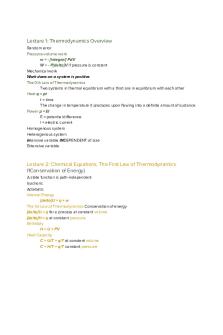
CHEM303 final exam review
- 4 Pages

Psychology Final Exam - Review
- 13 Pages
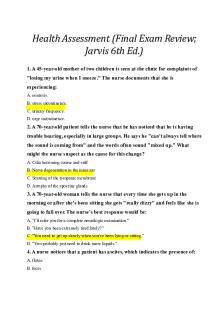
Jarvis Final Exam Review
- 12 Pages
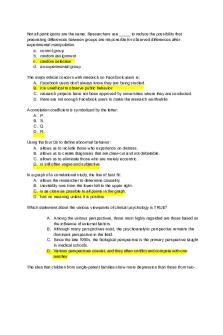
Final exam review
- 96 Pages
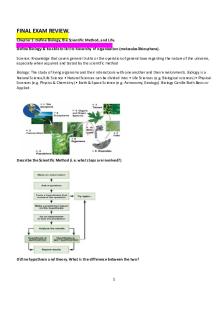
Final Exam Review
- 48 Pages
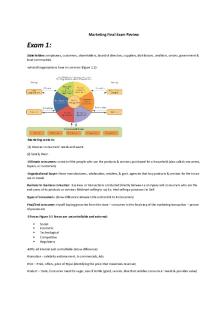
Marketing Final Exam Review
- 15 Pages
Popular Institutions
- Tinajero National High School - Annex
- Politeknik Caltex Riau
- Yokohama City University
- SGT University
- University of Al-Qadisiyah
- Divine Word College of Vigan
- Techniek College Rotterdam
- Universidade de Santiago
- Universiti Teknologi MARA Cawangan Johor Kampus Pasir Gudang
- Poltekkes Kemenkes Yogyakarta
- Baguio City National High School
- Colegio san marcos
- preparatoria uno
- Centro de Bachillerato Tecnológico Industrial y de Servicios No. 107
- Dalian Maritime University
- Quang Trung Secondary School
- Colegio Tecnológico en Informática
- Corporación Regional de Educación Superior
- Grupo CEDVA
- Dar Al Uloom University
- Centro de Estudios Preuniversitarios de la Universidad Nacional de Ingeniería
- 上智大学
- Aakash International School, Nuna Majara
- San Felipe Neri Catholic School
- Kang Chiao International School - New Taipei City
- Misamis Occidental National High School
- Institución Educativa Escuela Normal Juan Ladrilleros
- Kolehiyo ng Pantukan
- Batanes State College
- Instituto Continental
- Sekolah Menengah Kejuruan Kesehatan Kaltara (Tarakan)
- Colegio de La Inmaculada Concepcion - Cebu